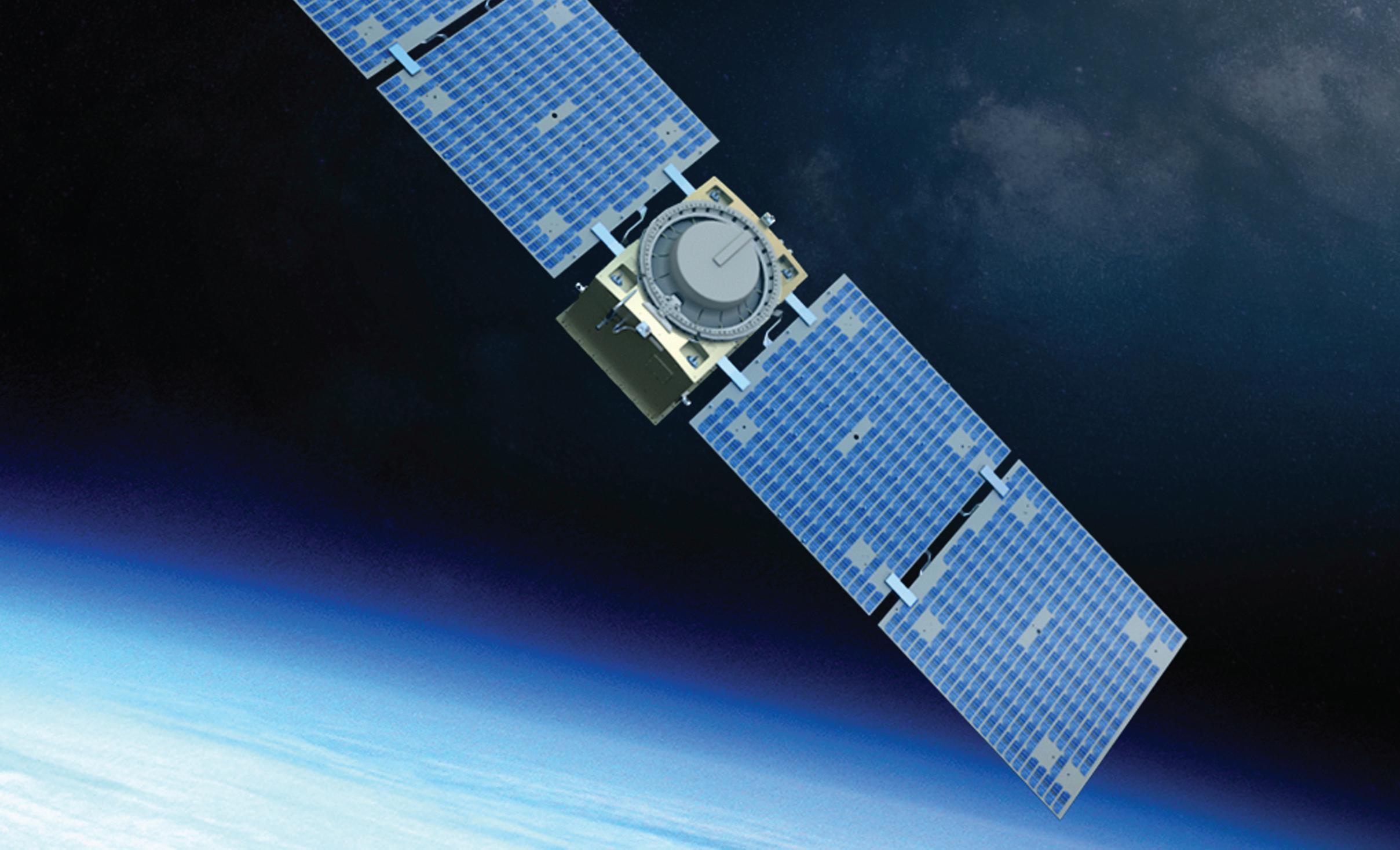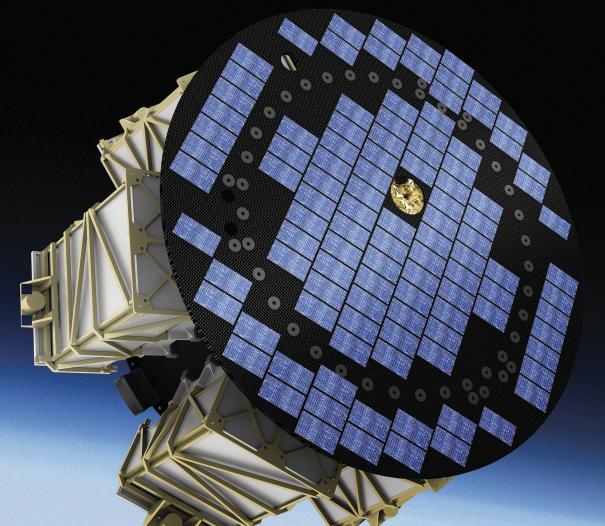
10 minute read
Revolutionizing the way to space
Moog Inc. is a worldwide designer, manufacturer, and integrator of precision control components and systems. The company’s high-performance systems control military and commercial aircraft, spacecraft, launch vehicles, missiles, automated industrial machinery, and marine and medical equipment. Moog has designed and manufactured components and systems for satellites and launch vehicles for more than 60 years and is dedicated to revolutionizing a way to space by continuing to make significant investments in its propulsion facilities as well as to conduct research and development on less toxic propellants.
Katie Gibas, Space Sector Marketing Communications Manager and Shae Williams, Ph.D., Moog Senior Project Engineer
For decades, governments and industry leaders around the world have been looking for propellants that are safer and more environmentally friendly. Europe has been at the forefront of green propulsion primarily due to REACH legislation that may eventually ban hydrazine, and as the numbers of launches and space activity hit record levels, there is a renewed focus and attention on green propulsion and less toxic propellants.
These efforts have attracted a variety of agencies, with NASA, ESA, and the Air Force Research Laboratory all launching missions using this technology; commercial satellites have also begun using such propellants.
Since there is no strict definition for “green” propulsion, it is worth defining what we mean by the term. The challenge is that “green,” in relation to the spacecraft propulsion industry, could be considered a misnomer based on the way every other industry uses the term to focus mostly on the natural ecosystem. We consider propellant “green” if it delivers comparable performance to the state-of-the-art storable monopropellants and bipropellants while being significantly less toxic. Thus, a more accurate moniker is “less toxic propellants,” so we will use the two terms interchangeably.
Less toxic propellants can present several advantages on-orbit, including potentially higher performance, longer missions, and increased maneuverability of spacecraft. It is on the ground, however, where a strong driving force behind the technology becomes important. The highly toxic nature of conventional propellants like hydrazine requires specialized facilities and a highly trained workforce operating hazmat suits with self-contained breathing apparatus (often called SCAPE suits) to load the propellant into the spacecraft.
The direct hazards to the personnel and spacecraft typically mean all other operations are fully stopped while the fueling activity is performed, which can take upwards of a week at a launch site. Fueling logistics can be very time-consuming and expensive.

Katie Gibas, Space Sector Marketing Communications Manager
Green fuels are much safer and easier to work with and do not have the same safety and environmental concerns. That means a simplified fueling process, and operations can be performed in a matter of hours, often in parallel with other activities.
Adoption has been relatively slow, as green propulsion has only begun flying in the past decade. Moog has been a leader in space propulsion since the Apollo era and continues to make investments at their in-house engine hot-fire test facility, which allows rapid evaluation of new thruster designs.
Our engineering team has supported green propulsion since the beginning with an active research program maturing green thruster technology. We have conducted this R&D both on our own and in cooperation with government partners like NASA and the Air Force Research Laboratory (AFRL).

Shae Williams, Ph.D., Moog Senior Project Engineer
Our propulsion team worked with AFRL in the early development of the green monopropellant AF-M315E, and in 2009 received the first Advanced Monopropellant Risk Reduction (AMRR) contract to assist the Air Force in developing a catalyst for AF-M315E.
More recently, AF-M315E has been rebranded as Advanced Spacecraft Energetic Non-Toxic (ASCENT) propellant. These programs are important because green propellants have technical challenges relating to higher combustion temperatures and more restrictive material compatibility. Often, that means more expensive hardware.
Moog is leveraging its expertise in thermal management and high-performance thrusters to develop and supply components such as valves and tanks for use with green propellant, both conventionally and additively manufactured. Our teams are building thrusters in multiple thrust classes and even full propulsion systems for customers using green thrusters from manufacturers in the US and Europe.
WHO WILL GO GREEN?
The space sector is seeing similar trends to most industries: emphasis on lower cost, faster design and production, and higher performance. As green technology is better able to meet those needs at scale, we will likely see it take a portion of the satellite propulsion market but not all of it. It is likely several other bespoke propellants/propulsion technologies will be used at a smaller scale.
There will always be customers who will need hydrazine or its derivatives and nitrogen tetroxide. For example, flight heritage and use launch sites such as Kennedy Space Center or Vandenberg Space Force Base which already have the special facilities and personnel needed to fuel spacecraft with traditional propellants will remain with those traditional propellants.
More agile companies, ones willing to take more risks for higher performance, and those who want to use newer spaceports, can take the best advantage of green propulsion right now. Avoiding all the legacy facility and personnel requirements and being able to more costeffectively and rapidly fuel satellites is very attractive to some NewSpace satellite manufacturers who want the mission advantages of propulsion without the traditional trade-offs.
Moog is using green propulsion for its space vehicle family to meet the needs of the growing class of small and medium launch vehicles. This is a key design feature as many of these vehicles do not allow or have the infrastructure to support hazardous propellant options.
Moog is leveraging the LMP-103S green monopropellant that has been used on dozens of spacecraft on-orbit, most already having Moog propulsion components on them. Moog’s Small Launch Orbital Maneuvering Vehicle (SL-OMV) is designed to launch on the new class of small launch vehicles.
The spaceport constraints were identified early and necessitated a green propulsion system configuration. This same propulsion system was used for Moog’s ESPA class bus product called METEORITE to simplify launch operations. The combination of our in-house materials science laboratory, state-of-the-art manufacturing, and test facilities, and the technical strength and experience of our personnel have been instrumental in allowing us to utilize these non-toxic technologies in our space vehicles family and pave the way to a greener future in space.

The Moog Small Launch Orbital Maneuvering Vehicle (SLOMV) is a propulsive tug.
Photo courtesy Moog
THE ROLE OF ADDITIVE MANUFACTURING IN GREEN PROPULSION
The focus in the spacecraft industry is on coming up with more cost-effective ways to do the same missions. Replacing hydrazine and other conventional propellants is only the first step; green propellants offer good synergy with another important emerging technology: additive manufacturing.
Additive manufacturing (AM) has given us the ability to design and manufacture extremely complex spacecraft propulsion solutions in a more cost-effective and timesensitive manner. AM offers unique geometries that increase propellant flow efficiencies and provide unparalleled thermal management.
Within one inch, a thruster could have a chamber that could reach temperatures greater than 2,500oF and a valve that needs to be maintained around 100oF at most. Furthermore, green propellants tend to have a higher combustion temperature than hydrazine and require heating before they will react with the catalyst. Additive manufacturing allows for these temperatures to be accommodated where traditional manufacturing methods would not meet the requirements.
Moog’s thermal management expertise, combined with our state-of-the-art Additive Manufacturing Center (AMC) has enabled us to optimize our green propulsion thruster designs and gain unique experience printing hightemperature exotic materials, including ceramics and various refractory metal alloys that stand up to the heat of combustion and the oxidizing environment these propellants create. We have demonstrated success with these challenging applications under industry-leading cleanliness and quality controls around our additive efforts.
One critical advantage of additive manufacturing is being able to print complex hardware and have it in hand faster than ever before, which is critical in development programs. For example, ordering a new rocket nozzle from a traditional supplier could take 12 months to get something brand new, making rapid development cycles impossible. Using additive manufacturing, we can go to Moog’s AMC at our headquarters in East Aurora, New York with a drawing or CAD file, and they can often print parts of comparable quality in a matter of weeks or even days.
Being able to develop a new type of thruster or use a new type of propellant is far easier when enablement technologies like this reduce the iteration cycle by an order of magnitude. At the same time, Moog’s demonstrated ability to meet rigorous consistency and quality standards has allowed our customers to accept additive parts in even high-temperature, fracture-critical areas such as thruster injectors and thermal standoffs, giving us a unique advantage.
SMALL SATELLITES AND EXTENDING THE MISSION
looking for more rideshare opportunities, which is ideal for the green propulsion market. New technologies like this tend to start small. We are working on thrusters between 22N and 1N of thrust or less, the smaller end of which have a natural home in microsatellites and nanosatellites.
A new market area is highly agile small satellites, including Rendezvous and Proximity Operations (RPO), such as on-orbit satellite maintenance, repair, and refueling or active space debris removal. These missions require complicated maneuvers that require precise control.
That might call for multiple thrusters of varying thrust classes. For example, in addition to a larger thruster, like a 22N, that would do the big maneuvers like changing orbits, it would also want a set of 1N thrusters for fine adjustments to stay close to another satellite or dock with it. Monopropellants are ideal for these types of operations. Green monopropellants can provide potentially higher performance for the small vehicle size and mitigate risks both on the ground and on-orbit compared to hydrazine.
As the ability to refuel spacecraft garners more interest, propellant selection will become critical. Current refueling missions leverage hydrazine because that is the propellant on-orbit today, but as more platforms leverage green propellants, compatibility with refueling systems will become a design consideration. This is likely to limit the number of different green propellants in common use akin to gasoline and diesel fuels at a terrestrial gas station.
The industry wants a one-for-one drop-in replacement that is cheaper and less toxic. While the industry is not quite there yet, green propellants have the potential to revolutionize the way to space and how spacecraft perform in LEO to deep space missions, particularly when it comes to extending a satellite’s mission life and refueling on orbit. All the benefits of using green propulsion on the ground also apply in orbit. The safer and easier those propellants are to work with, the easier refueling gets. That is one of the reasons the Air Force Research Laboratory is investing heavily in green propellants and has done so for many years.
Right now, despite the slow adoption of green propellants, demand is still outpacing the technology and supply. We are steadily getting more and more requests for this hardware. That is why Moog is continuing a strategy of strong investment in green propulsion research and development, led by our materials expertise, our history of being on the cutting edge of in-space propulsion, and our ongoing investment in state-of-the-art assembly and test facilities.










